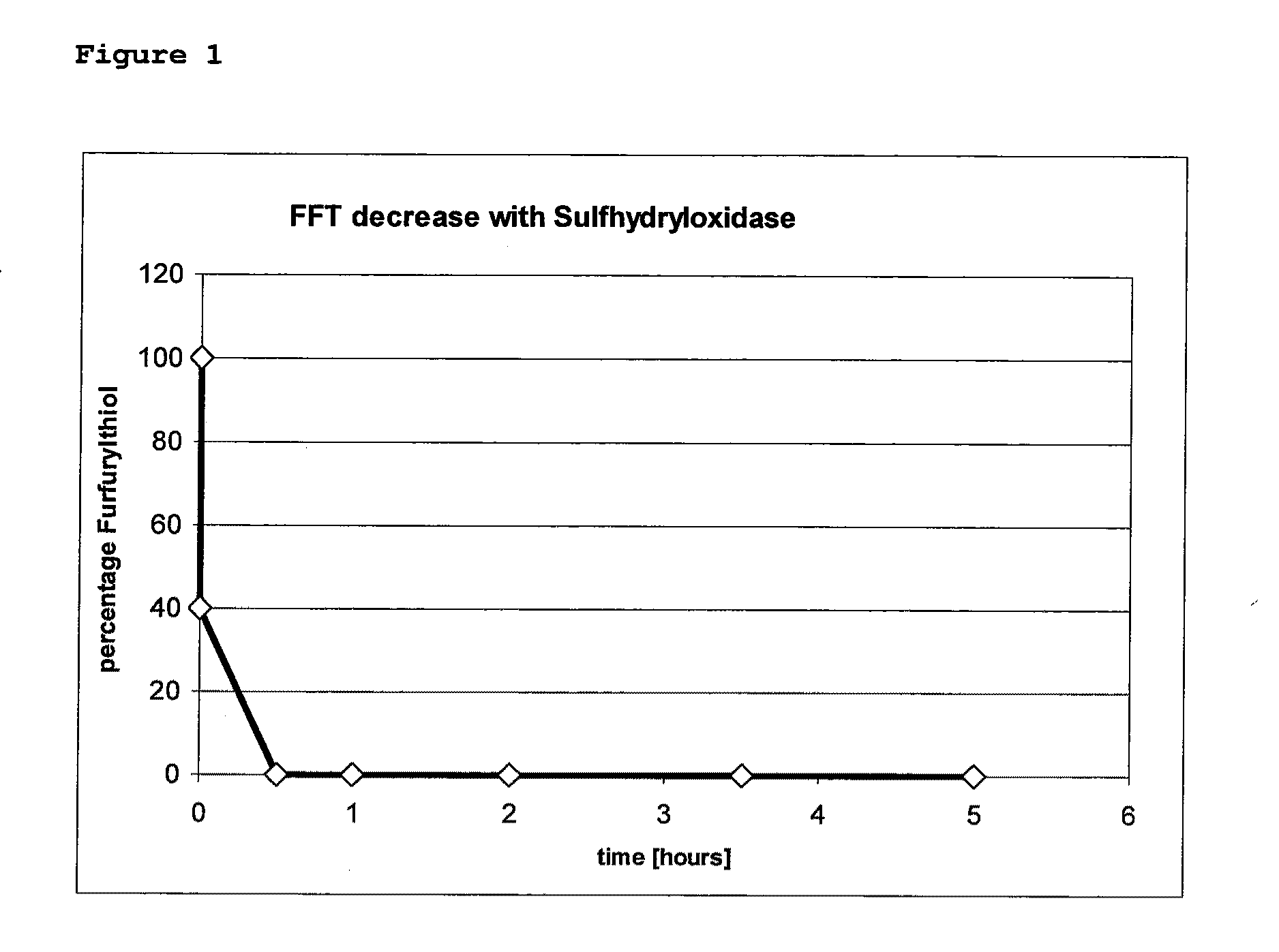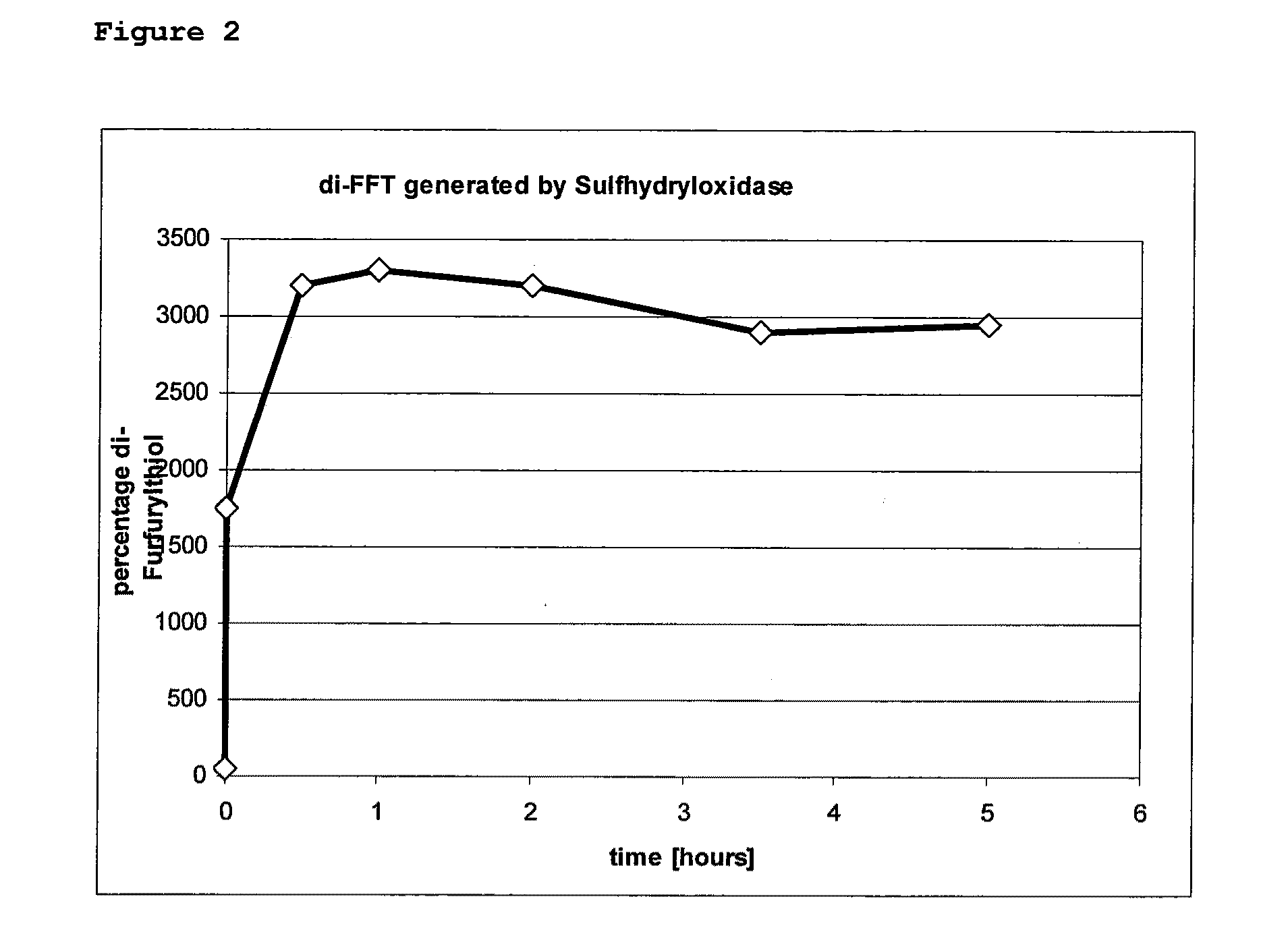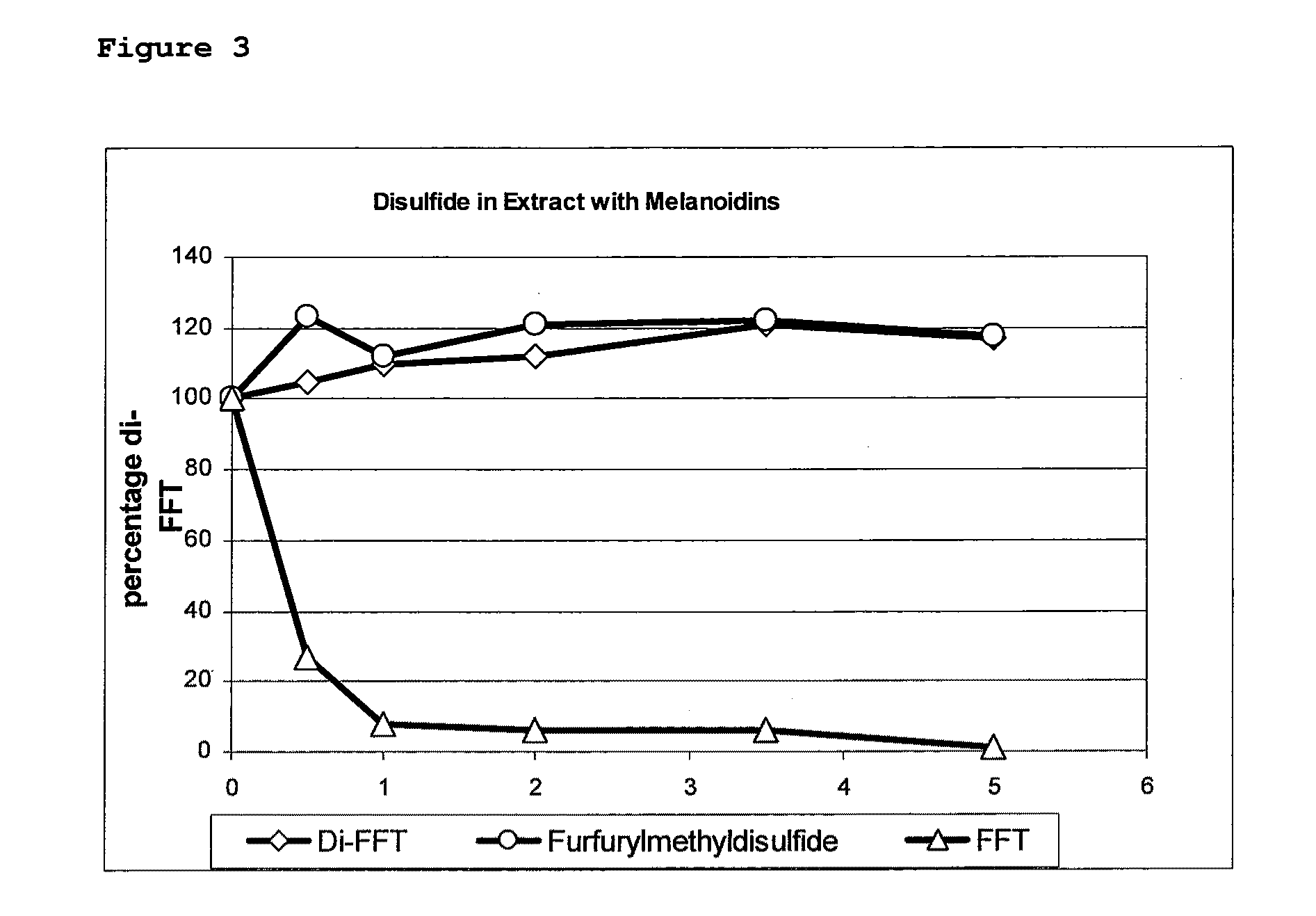Increased Stability Of Flavor Compounds
a technology of flavor compounds and stability, applied in the field of increasing the stability of thiol-containing flavors, can solve the problems of generating unpleasant bitter aroma, reducing the stability of flavor compounds, and reducing the stability of volatile thiol-containing compounds, so as to improve enhance the stability of flavor compounds
- Summary
- Abstract
- Description
- Claims
- Application Information
AI Technical Summary
Benefits of technology
Problems solved by technology
Method used
Image
Examples
example 1
Preparation of Aroma Extract (1)
[0044]Ground roast coffee of a particle size of at most approximately 1.8 mm which has been moistened to a water content of approximately 50 wt.-% relative to the ground dry roast coffee is treated in a percolator with saturated steam at a pressure of approximately 0.5 bar and a temperature of approximately 100° C. for approximately 5 minutes. The steam loaded with coffee constituents is condensed at a temperature of approximately 5° C. to a condensate quantity of approximately 5 wt.-% relative to the quantity of dry roast coffee used.
Isolation of Melanoidines
[0045]The melanoidins are isolated from a coffee brew by ultrafiltration using the following steps: (a) Separation of the coffee brew in to different fractions by ultrafiltration using a molecular weight cut off of 30 kDa; (b) the remanent (>30 kDa), i.e. isolated melanoidins, are freeze dried and used for reaction with FFT; (c) the filtrate (<30 kDa), i.e. coffee compounds, are discarded.
Prepara...
example 2
Preparation of Sulfhydryl Oxidase Solution (5)
[0054]100 mg of sulfhydryl oxidase Erv1p from yeast (X-Zyme GmbH, Merowingerplatz 1A, 40225 Dusseldorf, Germany) are dissolved in 2 mL Mcllvaine buffer (1 mM) at pH 7.5.
Preparation of a Flavor-Stabilized Aroma Extract (6)
[0055]5 mL of Aroma Extract Solution (1) of Example 1 are supplemented with 2 mL of Sulfhydryl Oxidase Solution (5) and agitated in a 20 mL vial at 750 rpm at 40° C. for 2½ hours. Every 30 minutes oxygen is injected into the vial.
Evaluation by Gas Chromatography Methods
[0056]Samples are obtained by liquid-liquid extract of the mixture of (1) and (5) with dichloromethane and subsequent centrifugation. 1 μL aliquots are analyzed by GC-FID (HP 5890 Series II) and GC-MS (Agilent 5973) using a DB 1701 capillary (Agilent; 30 m×0.32 mm ID×1 μm FD). The GC oven is ramped from 40-240° C. at a 5° C / min heating rate. A Gerstel CIS 3 injector was used. The net increase of Di-FFT and a decrease of FFT is observed after 4 hours reacti...
example 3
Preparation of Sulfhydryl Oxidase Solution (9)
[0059]50 mg of sulfhydryl oxidase Erv1p from yeast (X-Zyme GmbH, Merowingerplatz 1A, 40225 Dusseldorf, Germany) are dissolved in 100 mL Mcllvaine buffer (1 mM) at pH 7.54.
Preparation of Enzyme-Reacted Aroma Extract (10)
[0060]150 mL of the Aroma Extract Solution (1) of Example 1 is supplemented with 60 mL of the Sulfhydryl Oxidase Solution (9), oxygen sparging every 30 minutes reaction time and incubated at 40° C. for 5 hours.
Evaluation of Shelf Life Stability
[0061]5% of the Aroma Extract (8) in a dark Robusta coffee base has been diluted ⅕ in water.
Sample 2
[0062]5% of Enzyme-Reacted Aroma Extract (10) in a dark Robusta coffee base has been diluted ⅕ in water.
[0063]Reference Sample 1 and Sample 2 are stored at 50° C. for 8 days. Sensory evaluation of both samples is carried out by an expert tasting panel by sniffing at various intervals. Results are depicted Table 3 below.
TABLE 3Results of the Shelf Life Test after 8 day...
PUM
| Property | Measurement | Unit |
|---|---|---|
| Time | aaaaa | aaaaa |
| Time | aaaaa | aaaaa |
| Time | aaaaa | aaaaa |
Abstract
Description
Claims
Application Information
 Login to View More
Login to View More - R&D
- Intellectual Property
- Life Sciences
- Materials
- Tech Scout
- Unparalleled Data Quality
- Higher Quality Content
- 60% Fewer Hallucinations
Browse by: Latest US Patents, China's latest patents, Technical Efficacy Thesaurus, Application Domain, Technology Topic, Popular Technical Reports.
© 2025 PatSnap. All rights reserved.Legal|Privacy policy|Modern Slavery Act Transparency Statement|Sitemap|About US| Contact US: help@patsnap.com



